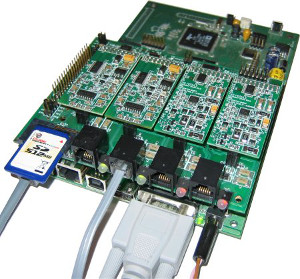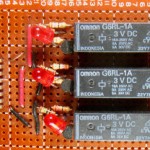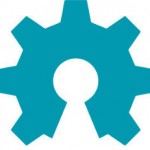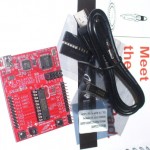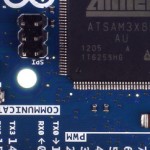The panStamp development environment for wireless sensor networks and Internet-of-Things applications is based around compact, low-cost microcontroller boards including a built-in sub-gigahertz radio transceiver, providing the necessary connectivity and processing power to create autonomous low-power wireless sensor and actuator nodes with almost everything contained in a 24-pin DIP module that is compact, low-cost, easy to program and to use.
It’s easy for anybody to get started with the open-source panStamp platform, allowing you to measure almost anything by connecting a panStamp up to some sensors, connecting a small battery, writing some simple Arduino-compatible code and transmitting data wirelessly, providing a convenient solution for any kind of project needing low-power wireless communications or telemetry, such as home automation, energy metering, robot control or weather monitoring.
The panStamp platform makes it easy and accessible to get started creating wireless sensor networks and other wireless systems for both professional and hobbyist users.
Modules are very easy to program and configure, and they can be plugged into many different kinds of commercially available base boards containing different sensors, actuators and power supplies, or the user can develop their own custom base-board hardware to meet their needs, with all the complexity of the microcontroller and radio hardware contained on the panStamp module.
Wireless boards run a compact stack and communicate with each other using a simple protocol called SWAP, using the 868 or 915 MHz ISM radio bands, offering lower congestion and longer range compared to 2.4 GHz solutions. The lightweight, open-source SWAP protocol that powers the panStamp radio stack is designed for use with Texas Instruments CC11xx radio hardware in resource-constrained wireless sensor network and machine-to-machine applications, typically consuming only about 7kB of flash and less than 1kB of RAM.
Everything has been designed to perform efficiently, quickly and with good power efficiency with one of the most compact wireless stacks on the market, allowing developers to focus on their applications without worrying about low-level details of the microcontroller and radio implementation.
However, the platform is all free and open-source, so those details of low-level implementation are available for developers to look at if you want to. The panStamp project provides a complete solution to allow you to build wireless sensor networks that are connected to the cloud – not only microcontroller and sensor boards, but also the communications stack, protocol definitions, network controller and management tools to get your network of sensors up and running and connected to cloud services.
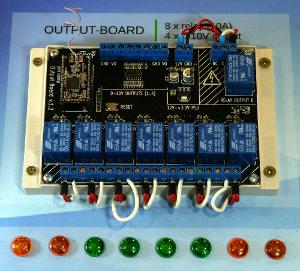
From the data collection and actuation to transmission, data management, event handling and IP tunnelling, panStamp aims to provide easy connectivity of wireless devices to cloud services and other Internet-of-Things services in a way that is accessible regardless of your technical background.
Most of the core features of panStamps hardware, such as power management, the real-time clock and the RF transceiver are controlled inside the panStamp library, so the user doesn’t have to deal with the
low-level programming required to control these hardware peripherals. To consider some of the standard base-boards available for use with panStamp modules, a good starting point is panStick, which is a USB-connected motherboard for panStamps.
The panStick is used to program panStamps, and also acts as a serial gateway from your PC to the wireless network. You simply place a panStamp on the panStick, program the panStamp with the modem application, and plug the dongle into your computer. This is the simplest way to connect panStamp RF networks to any software on your PC, including the SWAPdmt device management tool for SWAP networks and the Lagarto software for cloud service connectivity.
The panStamp shield for Raspberry Pi adds connectivity to panStamp radio networks on the Raspberry Pi via its UART, combining low-power wireless connectivity with the Pi’s Ethernet or 802.11 networking and more powerful computing capacity, providing a gateway from the panStamp network to the Internet without the size or power consumption of a traditional PC.
This shield essentially provides the Raspberry Pi with an RF “modem”, as well as providing a DS1338 real-time clock with battery backup to allow the Raspberry Pi to keep the current time without power or network connectivity.
The panStamp AVR module is based around an Atmel ATmega328P microcontroller and TI CC1101 radio transceiver, and is fully compatible with the Arduino bootloader and IDE. Developers can create their own programs and upload them to panStamps using the standard Arduino IDE, making the panStamp platform very accessible and easy for everybody to get started with, especially if you have previous Arduino experience.
The more powerful, advanced panStamp NRG module is based around the TI CC430F5137, which combines TI’s MSP430 low-power 16-bit microcontroller with a sub-gigahertz radio transceiver on the die, providing a neat, single-chip, power-efficient solution for sub-gigahertz wireless sensor networks.
The panStamp NRG module is fully compatible with the Energia IDE, a port of the Arduino IDE for the Texas Instruments MSP430/Stellaris microcontroller family. This allows the developer to easily get started with software development for these relatively powerful 16-bit, power-efficient microcontrollers with the same ease of use and same language and development environment that will be familiar to Arduino users.
The radio hardware used in panStamps can typically achieve a transmission range of about 200 meters in open spaces at 38400 bps and 0 dB transmission power, using only a small wire antenna. Using higher transmission power configurations, external high-gain antennas connected to the SMA connector available on panStamp boards, or slower bit rates, it is likely that substantially larger transmission distances could be achieved if this is what your application requires.
The Lagarto software platform allows you to monitor and control panStamp devices remotely from your PC or Raspberry Pi, process the data coming in from your network of devices and deliver it out to the network or the Internet using different mechanisms, for example for connectivity to cloud services. Lagarto is an open automation platform for use with SWAP networks, panStamps and other low-power wireless sensor network technologies, connecting SWAP networks to the IP domain and to the Internet. It is a lightweight solution, designed to run on low-power LAN connected platforms such as embedded plug computers and the Raspberry Pi. Lagarto’s extended automation module has the capability to run complex tasks locally and also connect local networks to remote data services.
Furthermore the cosm, GroveStreams, ThingSpeak and openSense Internet-of-Things web services are currently supported with connectivity to Lagarto out of the box at the present time, with support for new platforms likely to be added in the future.
Also, panStamps are now officially supported in OpenRemote, a powerful open-source home automation software for iOS and Android devices. One of the major attractive features of OpenRemote is the capacity for anyone to create custom graphic layouts for their preferred mobile platforms for free using OpenRemote’s online designer, uploading the generated files to a computer running OpenRemote Controller and have these custom controller layouts on their mobile device interoperable with a wide range of automation hardware including but not limited to panStamps.
Thanks to the open-source nature and low hardware cost of this platform, it’s simple to get prototypes of IoT systems up and running – which also translates to lowering the cost of the system development through to the final product. However if you need any form of guidance from consulting through to end-product manufacturing and support – we can partner with you – finding synergy with your ideas and our experience to create final products that exceed your expectations.
To get started, join us for an obligation-free and confidential discussion about your ideas and how we can help bring them to life – click here to contact us, or telephone 1800 810 124.
LX is an award-winning electronics design company based in Sydney, Australia. LX services include full turnkey design, electronics, hardware, software and firmware design. LX specialises in embedded systems and wireless technologies design.
Published by LX Pty Ltd for itself and the LX Group of companies, including LX Design House, LX Solutions and LX Consulting, LX Innovations.


